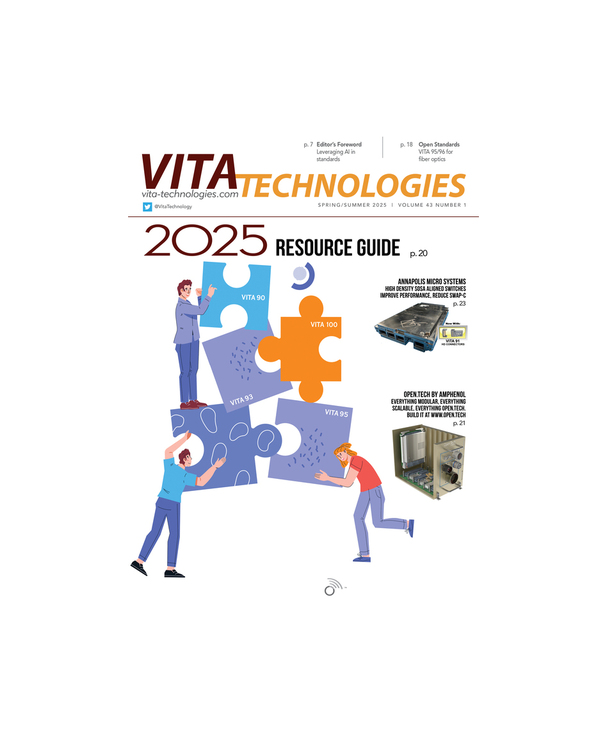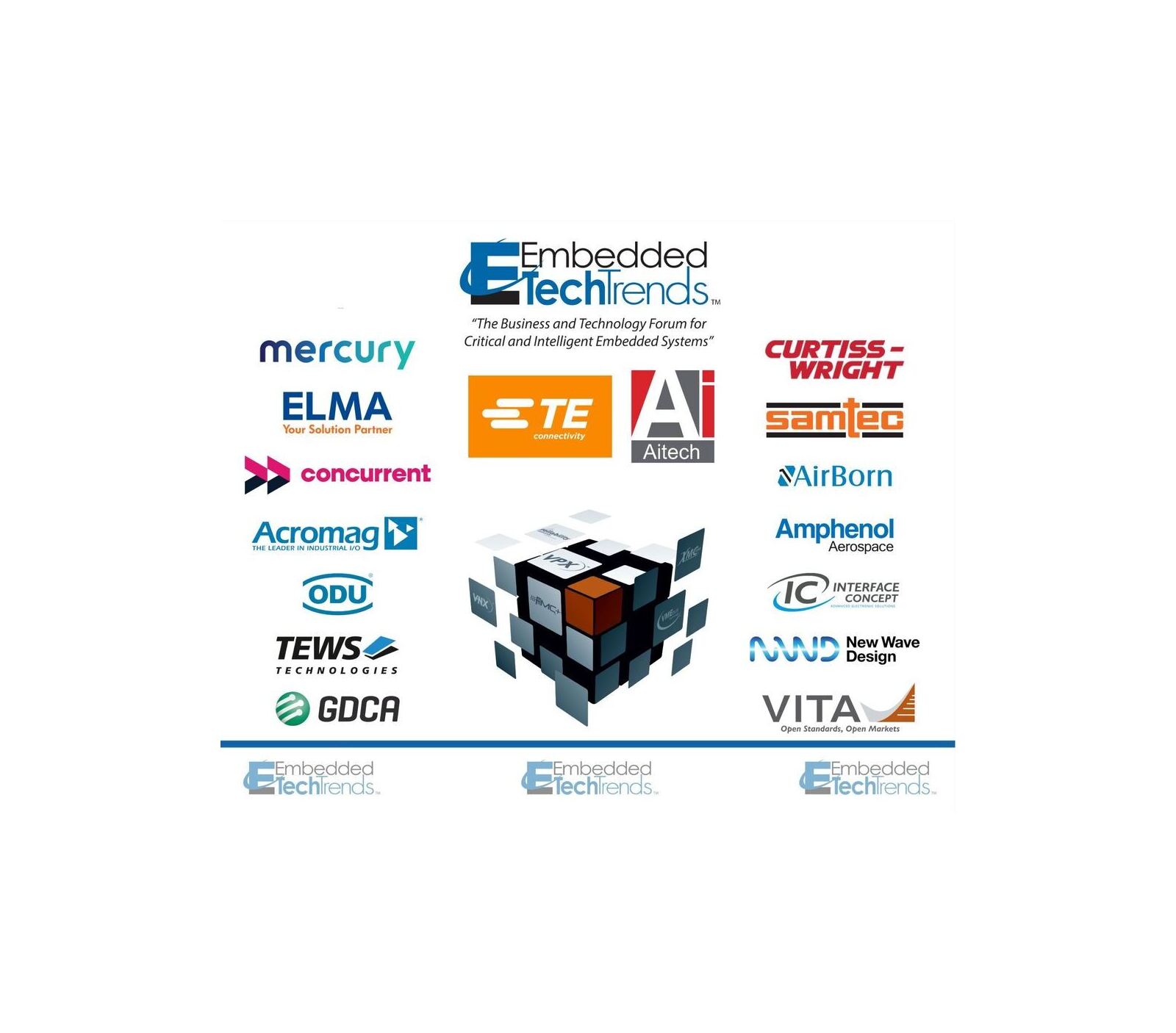Embedded electronic systems naturally evolve to become smaller. This is driven by Size, Weight, Power, and Cost (SWaP-C) where the smaller, lighter, and less energy demanding a computing system becomes, the more doors to opportunities are opened. Systems operating in rugged environments are no exception. Making computer modules smaller while not giving in on capability and performance opens up new markets. Distributed and modular computing elements are behind the Department of Defense (DoD) Modular Open System Approach (MOSA). More recently, the Vehicle Integration for C4ISR/EW Interoperability (VICTORY) initiative has spurred on the standards activity at VITA.
According to Scott Davis, U.S. Army Program Executive Officer for Ground Combat Systems (PEO GCS), the VICTORY standard will be included in all upcoming engineering change proposals for existing vehicle fleets, in the Ground Combat Vehicle effort, and in families of computers planned for integration into the platforms of tomorrow. This is leading many embedded computing platform suppliers to revisit their product strategies.
Target markets
The emerging form factors generally have similar target markets. They are specifically intended for use in markets where SWaP-C is given a very high priority and rugged modular computing platforms are essential.
Air, ground, or underwater manned and unmanned vehicles are leading applications because so many different and incompatible platforms have been bolted in place in a rush to get the latest electronics deployed. Robotics are being used more frequently, but there are no common standards that could reduce maintenance and integration costs. Certain man-wearable systems could take advantage of the smallest rugged form factors instead of squeezing commercial-grade products into environments that are too demanding.
Outside of the defense market, there are many applications that can benefit from modular, rugged embedded computing platforms. Security systems, transportation infrastructure, oil and gas, and the smart grid are just a few of the possibilities.
Options in play
VITA has been involved in small form factors since the origin of VMEbus in 1979, which included a 3U option. Since then, there have been numerous small mezzanines starting with IP modules, the industry de facto PMC, and now XMC, the new FMC, and several other specifications. In more recent times, the form factors have included stand-alone computer modules like VITA 59 RSE: Rugged System-on-Module Express. 3U VPX is very popular, even more so than 3U VMEbus ever was in earlier days, with more than 100 3U VPX products currently listed in the VITA product directory.
But the new initiatives are different. Standards developers had rugged applications in mind from the get-go. They are taking into consideration various cooling strategies from convection to conduction, focusing on lower module mass, and keeping performance and serviceability in the forefront. Here is a rundown of the work efforts.
VITA 73
[Editor’s Note: VITA 74 was covered in the 2011 Winter issue, “Evolution of a small form factor.” See http://vita-technologies.com/articles/evolution-a-small-form-factor/]
VITA 73 was conceived while searching for a solution to a network attached storage problem, when a 2.5-inch “X-frame” carrier for SSDs was determined to be an appropriate form factor size for an embedded computing platform. VITA 73 provides a standard mechanical format with switched serial interconnects, with specific concern taken to allow deployment in ruggedized environments.
Working group design goals:
- Footprint – 8 slot: (W) 4.5"; (H) 4"; (D) 6"
- Low weight
- Based on the VPX electrical protocol
- No edge connectors used
- PCI Express backplane
- Fast maintenance
- High functional density design
- Zero wires in the entire system, including access to rear I/O
- 10 Gig high-speed connector
Status: The VITA 73 working group is nearing completion of the specification in preparation for working group balloting. Evaluation modules are available from PCI-Systems.
VITA 74
The inspiration for VITA 74 came from reviewing existing COM standards including nanoETXexpress for miniature CPU modules, existing VITA standards for VPX and FMC, and the smaller-sized and target-price-point PC/104 modules. The target user community has a need for price-sensitive platforms with a standards-based approach for conduction-cooled systems. The working group – consisting of several merchant board manufacturers, system integrators, and defense prime contractors – drew from existing open standards to reduce the risk and schedule.
The working group design goals are the following:
- Boards the size of a credit card;
12.5 mm and 19 mm modules - Stand-alone computers the size of a deck of cards
- Systems the size of a Rubik’s Cube
Status: The VITA 74 working group is nearing completion of the specification, and then balloting. Modules and systems are available from Themis Computer and select suppliers.
VITA 75
[Editor’s Note: VITA 75 was covered in the Summer issue, “VITA 75 – The rugged small form factor in a box,” in more detail by Tom Roberts of Mercury Computer Systems. See http://vita-technologies.com/articles/vita-rugged-form-factor-a-box/]
VITA 75 is a “voice of the customer” driven program. The scope of the VITA 75 project is broken down into modular subsystems that define the complete platform. The VITA 75 specification defines a box and external interfaces to that box, including:
- VITA 75.0 Base Profile – Defines external dimensions and the envelope that the subsystem must fit within; the size is scalable.
- VITA 75.1x Front Panel Profile – Defines the power and signal interfaces that connect externally to the subsystem.
- VITA 75.2x Cooling and Mounting – Defines various cooling methods and the interface for cooling the subsystem.
- VITA 75.x Internals Structure – Defines types of modules that can be used within the Base Profile.
In short, VITA 75 is a specification that defines a small form factor, box-level standard that is based heavily on the customer’s voice.
VITA 75 is most notably differentiated from the VITA 73 and VITA 74 initiatives by the fact that it focuses on the box, both the size and the level of ruggedization of the operating environment. The internal modules are yet to be defined but could easily include VITA 73- or VITA 74-style modules.
Status: The VITA 75 working group released several subprofiles of the specification to “Draft Standard for Trial Use” status in June. The intent is to give manufacturers and users the opportunity to design, build, and use products to provide feedback to the standards developers based on actual use.
Spurring acceptance
Smaller sizes certainly widen the spectrum of applications that can take advantage of these new form factors. Applications that in the past might have forsaken an embedded computer because the environment was too harsh now have some attractive choices.
The smaller size of these new rugged systems usually means less mass, making them practical for many mobile applications where the electronics are being bounced around. These might be air-, ground-, or water-based vehicles containing these electronics. The smaller mass is easier to design around, requiring less infrastructure to contain and protect the electronics subsystems. The conduction-cooling environments included with these specifications make the cooling problem smaller, eliminate the fans, and improve the overall reliability of the electronics subsystems.
VITA 73 and VITA 74 both leverage existing bodies of work to some degree, easing these modules’ uptake and acceptance by system architects. For instance, both use the same connector selected by the FPGA Mezzanine Card (FMC) working group for the VITA 57 specification. The popularity of FMC hastens acceptance of the connector strategy. VITA 73 and VITA 74 both use the bus topology from VPX, which is also widely supported and deployed, letting them both ride the wave of serial switch fabrics popular in today’s high-performance embedded computers.
Processors in play
An interesting trend is emerging with the smaller form factors, a trend new to many traditional VME suppliers. Instead of the Freescale or Intel processors used on many 6U and most 3U modules, a move to other processors is afoot. New products are using a variety of processors: ARM, AMD G Series, and the Intel Atom families. These processors have smaller packages and associated chipsets that make them more suitable to the physical space limitations, plus they have much lower thermal operating thresholds that are more appropriate to the target applications. An additional benefit of this shift is that these processors also are much lower in cost, thus keeping the small form factor choice much more price competitive than some of the larger form factor options.
This is not to say that we won’t see the higher-performance processors like the Intel Core 3rd Generation and Freescale iterations used in the future, but the spectrum of processor architectures will certainly be larger.
Summary
Davis characterized VICTORY as a framework that really designs or specifies the standards for an internal vehicle data distribution architecture. He emphasized that VICTORY does not bring with it any hardware or software, but it does provide a series of standard protocols and definition of a data bus. The VICTORY specifications are being developed by a government/industry standards body, with VICTORY following an adopt-adapt-author methodology in the effort to move toward establishing the common open standards for use within the vehicle and mission system communities.
The greatest downside right now has nothing to do with technology, but rather with the uncertainty facing the world economy. Many programs suited to the smaller, rugged platforms have slowed down, delaying large-scale deployments. Research and Development (R&D) is still very active, giving the current module suppliers plenty of programs to chase (Figure 1).








